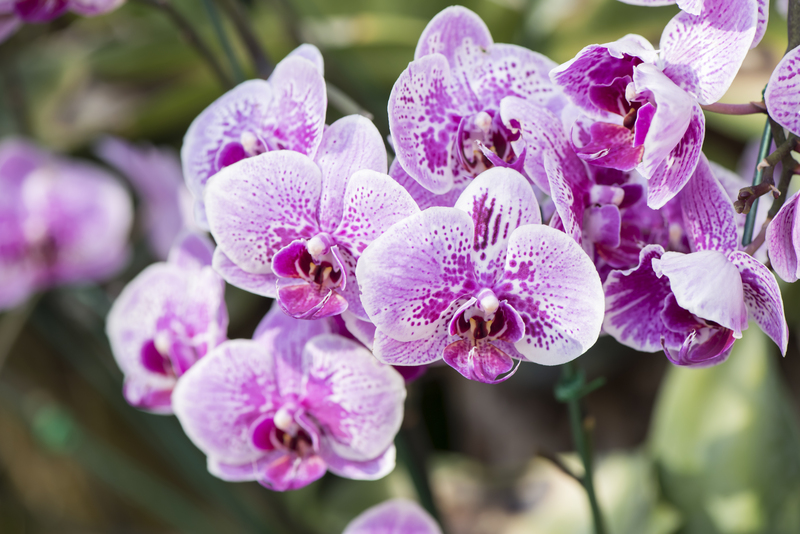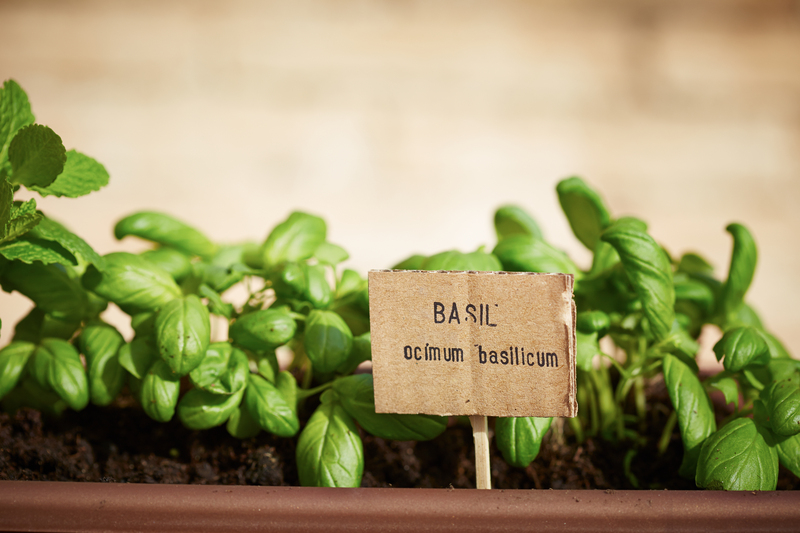Elevate Garden Aesthetics with Hedge Trimming Techniques
Posted on 22/06/2025
Elevate Garden Aesthetics with Hedge Trimming Techniques
Enhancing the charm and elegance of your garden begins with mastering the art of hedge trimming. Healthy, well-manicured hedges are the backbone of captivating landscapes, offering structure, privacy, and visual appeal. In this comprehensive guide, we'll explore the best hedge trimming methods, tips for different plant varieties, essential tools, and expert advice to truly elevate your garden's aesthetics.
Why Hedge Trimming is Crucial for Garden Beauty
Hedges are more than just green dividers; they're integral elements of garden architecture. Regular trimming not only preserves their form but also encourages lush, dense growth, deters pests, and prevents diseases. Consistent hedge trimming techniques result in visually pleasing shapes, clean lines, and a polished look that can instantly elevate the appearance of your outdoor space.
- Enhances Shape and Symmetry: Regular pruning maintains your hedges' desired form, ensuring uniformity and defined boundaries.
- Promotes Healthy Growth: Trimming stimulates new shoots and thickens foliage, making hedges fuller.
- Prevents Overgrowth: Keeps hedges from encroaching on pathways, driveways, and other plants.
- Deters Pests: Removing dead or decaying branches limits pest habitats and reduces disease risks.
- Boosts Curb Appeal: Neatly trimmed hedges enhance the overall aesthetics and value of your property.

Understanding the Basics: Types of Hedges and Trimming Approaches
Before delving into hedge trimming methods, it's important to consider the types of hedges in your landscape. Each species--from evergreen to deciduous, formal to informal--responds differently to trimming. Tailoring your approach ensures the best results and a thriving, beautiful garden.
Formal vs. Informal Hedges
- Formal Hedges: These require precise, frequent trimming to maintain sharp lines and geometric shapes. Common varieties include Buxus (boxwood), Privet, and Yew.
- Informal Hedges: These are allowed to grow more naturally and only require occasional shaping. Popular informal species include Hawthorn, Viburnum, and Lilac.
Evergreen vs. Deciduous Hedges
- Evergreen Hedges: Provide year-round structure and color. Trim lightly several times in the growing season to maintain shape.
- Deciduous Hedges: Lose leaves in winter. Prune during late winter or early spring for robust seasonal growth.
The Right Time for Hedge Trimming
When you trim your hedges can significantly impact their health and appearance. Trimming at the wrong time might stress the plants or stunt regrowth. Here's a seasonal guideline for various hedge types:
- Evergreens: Best trimmed in late spring or early summer when the risk of frost has passed but before the hottest weather arrives.
- Deciduous Hedges: Trim in late winter or early spring, before buds break.
- Flowering Hedges: Prune after flowering to avoid cutting off next season's buds.
For formal hedges, a light touch-up every few weeks during the growing season keeps lines crisp and appealing.
Essential Tools for Immaculate Hedge Trimming
Investing in the right tools streamlines the trimming process and ensures top-notch results. From hand-held shears to power trimmers, the choice of equipment depends on hedge size, type, and personal preference. High-quality, sharp tools make clean cuts, which are vital for plant health and a professional finish.
Basic Hedge Trimming Tools
- Hedge Shears: Manual shears offer control for precise shaping and detailing.
- Pruning Loppers: For cutting thicker stems or branches that shears can't handle.
- Electric or Battery-Powered Trimmers: Ideal for large or long hedging projects, allowing for uniform results in less time.
- Hand Pruners: Perfect for fine-tuning and removing dead or damaged growth.
Don't forget safety gear: wear gloves, safety glasses, and sturdy shoes while trimming to protect yourself from debris and sharp branches.
Step-by-Step: A Guide to Effective Hedge Trimming Techniques
Whether you want tight, formal lines or gently tapered natural shapes, following a proven technique ensures your hedges grow thick and stay healthy.
1. Plan Your Shape and Line
- Formal Hedges: Use string lines, stakes, or edging guides to outline your desired shape.
- Informal Hedges: Follow the plant's natural contours; trim just enough to maintain balance and structure.
2. Start from the Bottom
Always begin trimming from the base upwards. It's easier to spot uneven sections and maintain symmetry.
3. Taper Your Hedges
For healthier growth, trim hedges so the base is slightly wider than the top. This allows sunlight to reach lower branches, preventing bare patches.
4. Use Smooth, Sweeping Motions
Whether using shears or powered trimmers, work in smooth, sweeping motions. Avoid hacking or abrupt cuts, as these result in jagged, uneven edges.
5. Stand Back and Assess
Periodically step back and view your progress from a distance. This makes it easier to spot unevenness before finalizing your cuts.
6. Attention to Detail
Finish by snipping rogue stems and tidying up with hand pruners for a meticulous look that sets your garden apart.
Advanced Hedge Shaping: Patterns, Topiary, and Creative Designs
For those eager to elevate garden aesthetics with unique hedge designs, topiary and pattern trimming can transform ordinary hedges into living sculptures.
- Topiary: Create striking geometric shapes, spirals, or animals with dedicated shaping and frequent light trimming.
- Patterned Hedges: Use stencils or wireframes to guide intricate designs and features.
- Layered or Multi-level Trimming: Combine different heights and depths for visual interest and a dramatic, modern effect.
Topiary requires patience and regular pruning, but the results can truly set your garden apart as a showpiece of creativity and skill.
Common Mistakes in Hedge Trimming (and How to Avoid Them)
Avoid these pitfalls to ensure your hedge trimming elevates--rather than detracts from--your garden's look:
- Over-trimming: Removing too much foliage at once can shock plants and slow recovery. Trim little and often for best results!
- Neglecting the Base: Cutting the base narrower than the top leads to shading and bare spots. Always taper hedges outward.
- Dull Tools: Blunt blades tear branches rather than cut them cleanly, exposing plants to disease.
- Poor Timing: Pruning at the wrong season may cut off buds and future growth.
Regular Maintenance: Long-Term Garden Elegance
The secret to consistently elevating garden aesthetics with immaculate hedges lies in a regular maintenance schedule. Regular care prevents overgrowth, encourages symmetrical shaping, and keeps diseases in check.
Maintenance Checklist
- Monthly light trims during the growing season for formal hedges.
- Seasonal hard pruning for informal and deciduous species.
- Regular tool sharpening and cleaning after each use.
- Inspection for disease or pest infestations, treating issues early.
- Composting clippings or using as mulch to enrich soil health.
Enhance Garden Aesthetics with Complementary Elements
Beautifully sculpted hedges serve as striking backdrops for other garden features. Pair your neatly trimmed borders with layered planting, seasonal flowers, or decorative paths.
- Planting: Add color and texture with beds of perennials, bulbs, or ornamental grasses near your hedges.
- Garden Features: Accentuate symmetry with statues, birdbaths, or water features framed by hedges.
- Lighting: Use subtle landscape lighting to highlight crisp hedge lines at dusk.
This combination results in multi-dimensional outdoor spaces that reflect both style and skill.
Expert Tips for Hedge Trimming Mastery
- Vary Your Tools: Switching between shears, trimmers, and pruners ensures all branches--large and small--are neatly cut.
- Trim After Rain: Hedges are easier to shape when foliage is slightly damp, but avoid muddy, slippery ground.
- Feed and Mulch: After hard pruning, nourish hedges with compost and a layer of mulch to speed recovery.
- Work in Layers: Begin with shaping, then move to detailed cleanup for a polished final look.
- Stay Consistent: Make hedge maintenance a regular routine for ongoing garden brilliance.

Frequently Asked Questions About Hedge Trimming Techniques
How often should I trim my hedges?
The ideal frequency depends on the hedge type and your desired shape. Formal hedges look best with light trims every 4-6 weeks during the growing season, while informal hedges benefit from one or two good trims per year.
Can I trim hedges in hot weather?
It's best to avoid hedging during extreme heat, as this may stress plants. Early mornings or cloudy days are preferable. Watering the base after trimming also helps reduce stress.
When is it too late in the season to trim hedges?
Avoid trimming too late in autumn, as new growth may not harden before frosts. Late season cuts are best limited to removing damaged or diseased branches.
What is the best hedge for topiary?
Boxwood (Buxus), Yew, and Privet are the classic choices for topiary, as their dense, small leaves respond well to frequent trimming and shaping.
Conclusion: Transform Your Landscape With Expert Hedge Trimming
Mastering hedge trimming techniques is the key to unlocking the full aesthetic potential of your garden. With a thoughtful approach, the right tools, and regular attention, your hedges will shine as statement pieces--adding structure, beauty, and value to your outdoor sanctuary. Don't hesitate to experiment with creative shapes and pairings; the art of hedge care is limited only by your imagination. Start today, and watch as your garden transforms into a lush, inviting haven that delights season after season.





